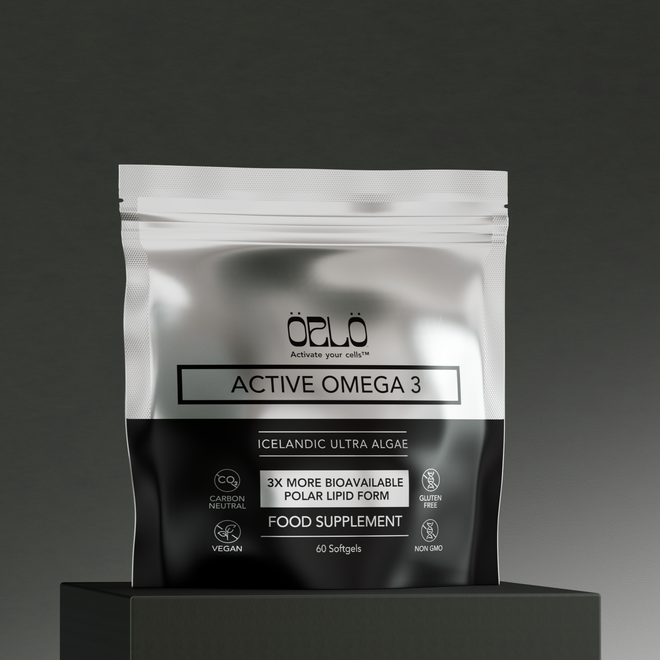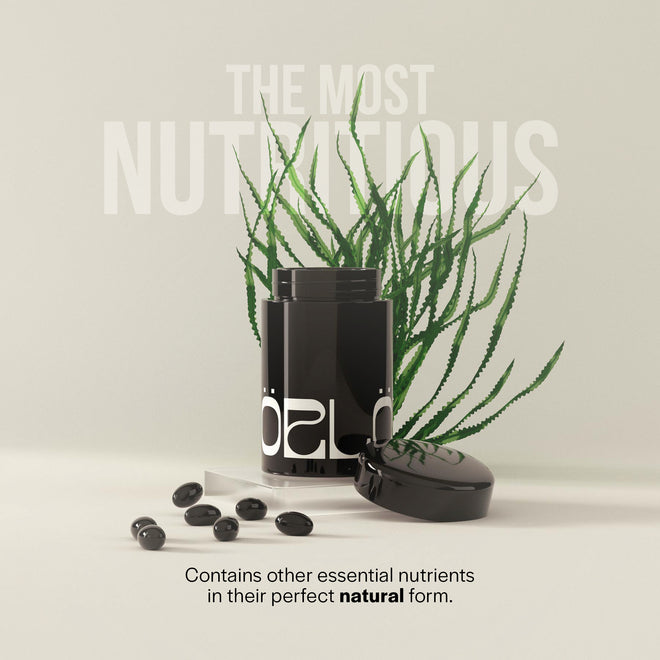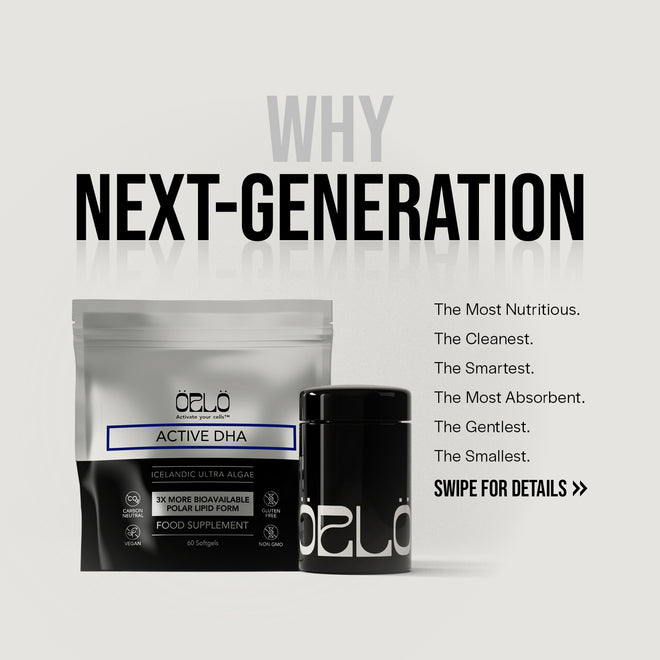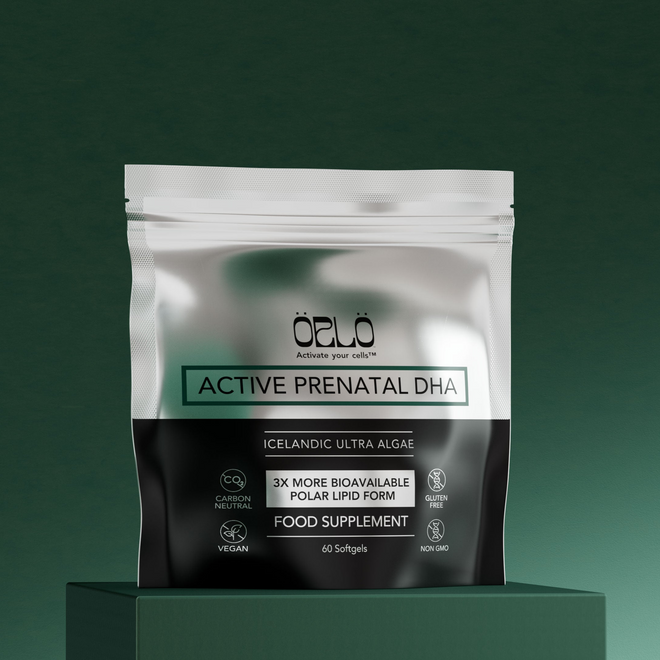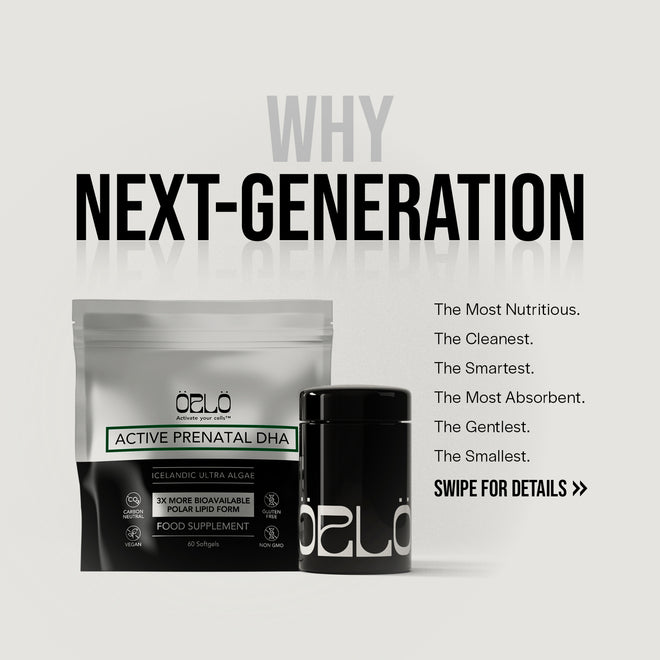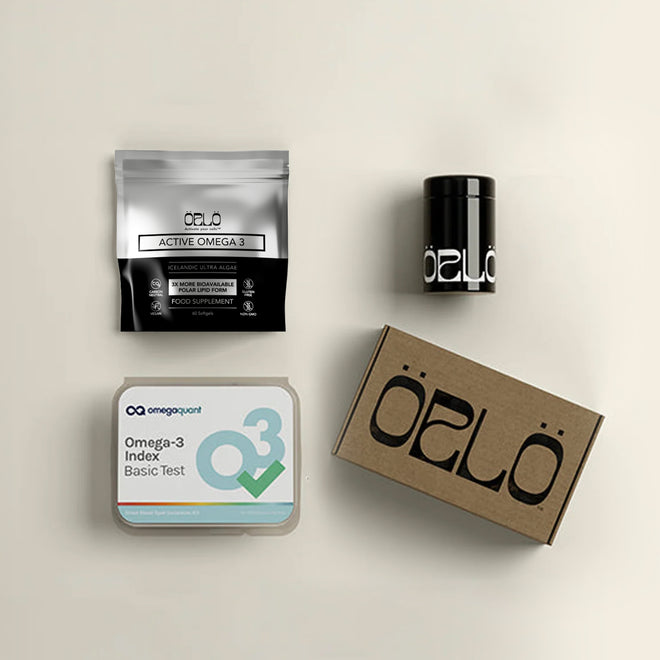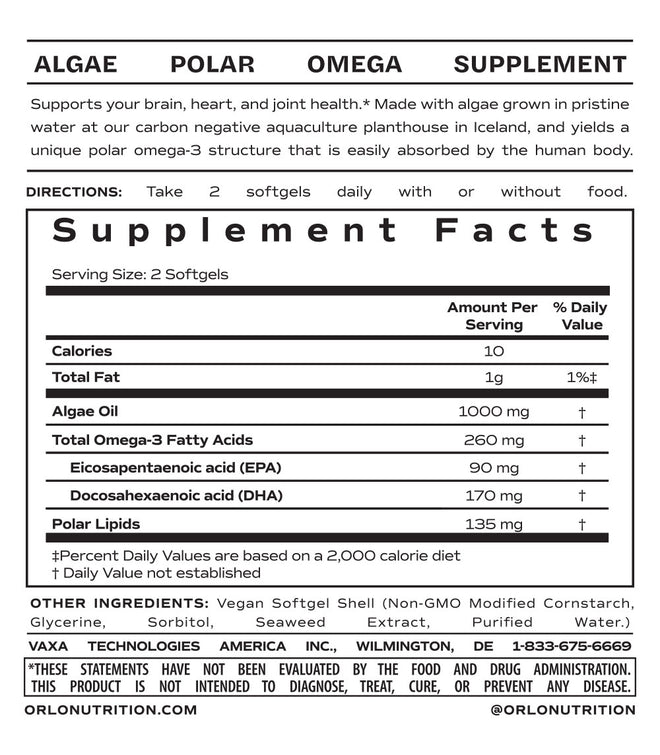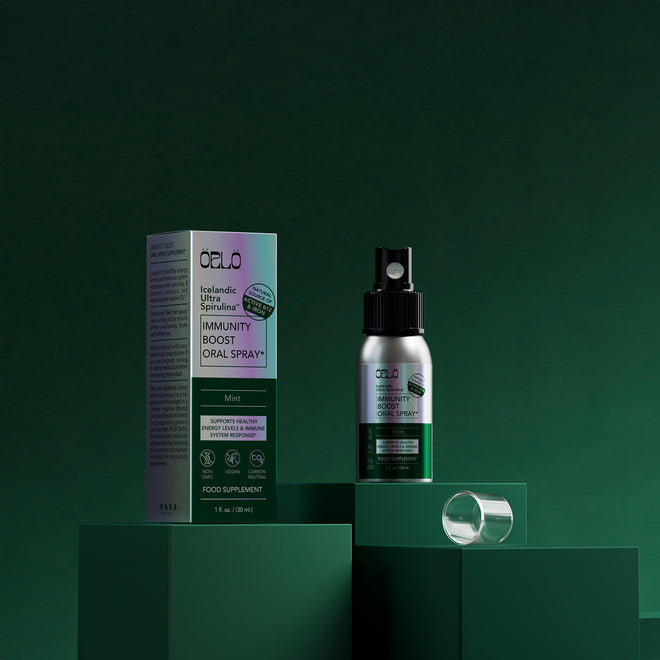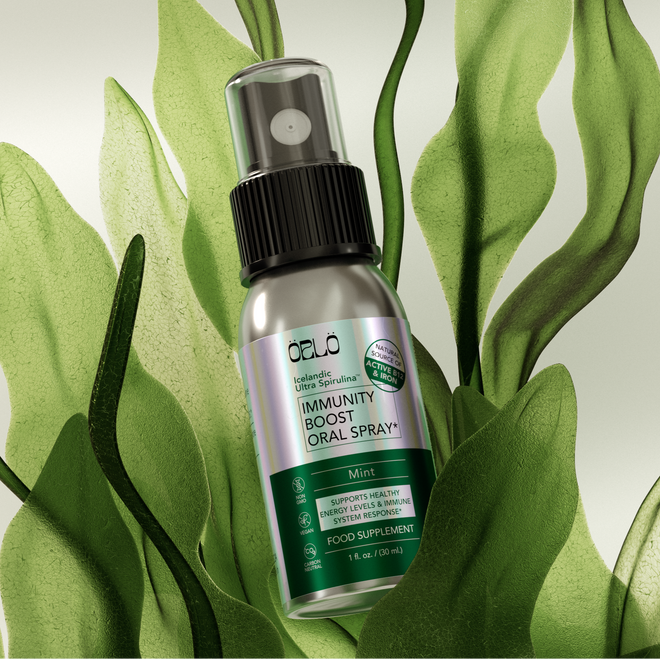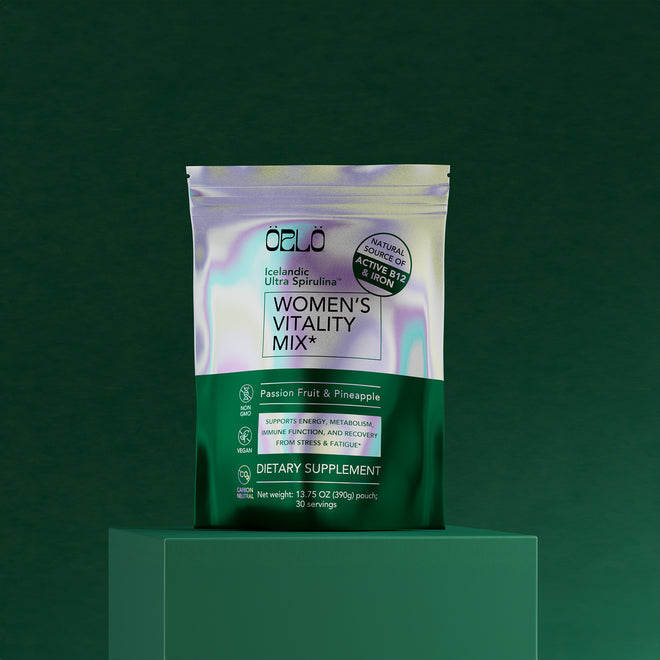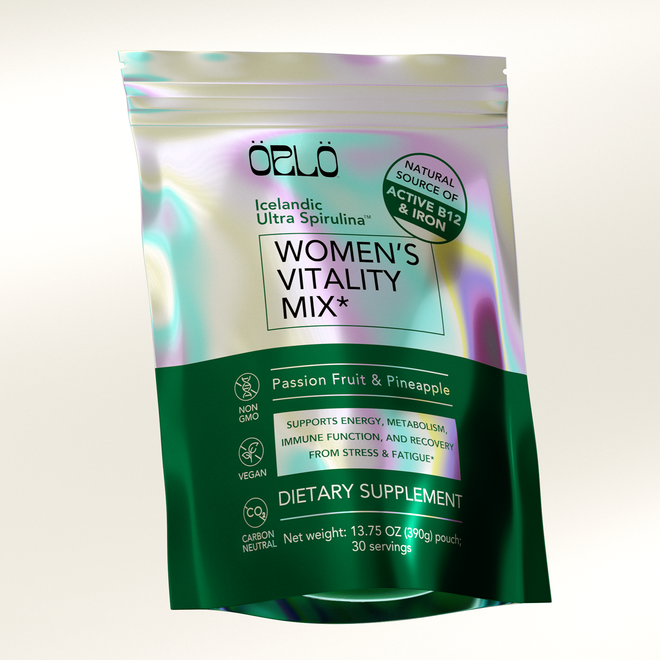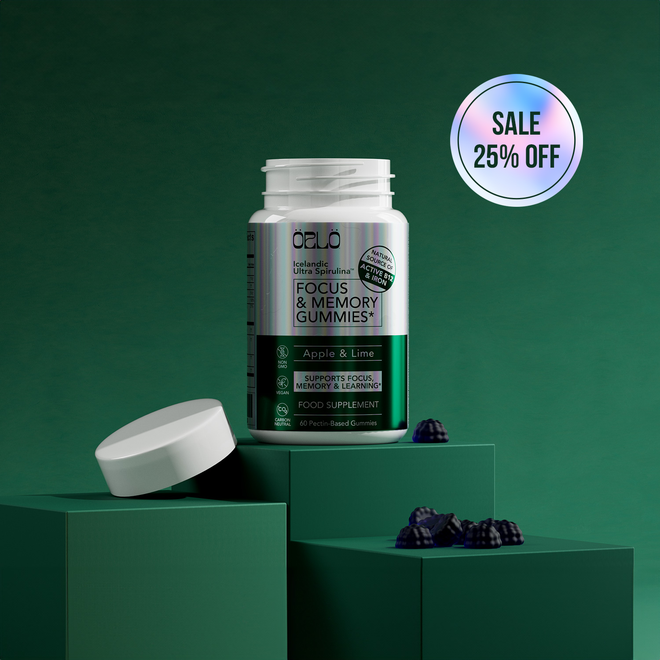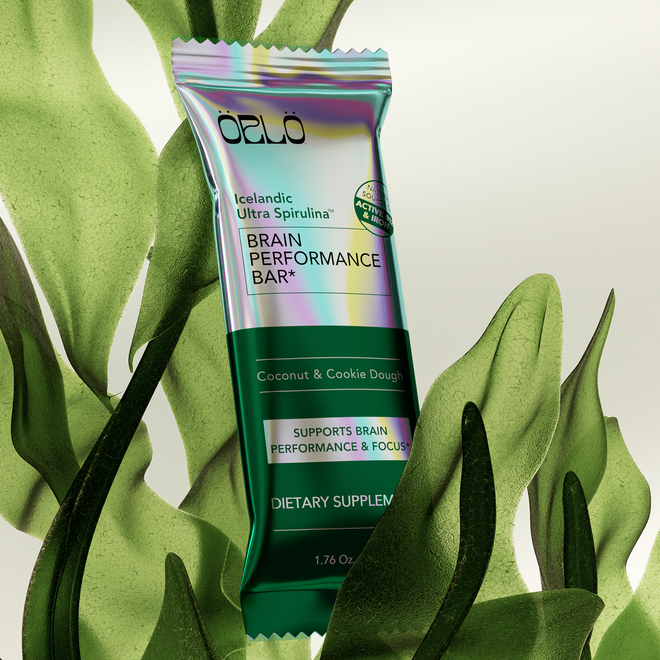Free shipping on purchases over $69
Harnessing The Power Of Algae To Save The Planet And Promoting Better Nutrition With Professor Isaac Berzin, CTO and Founder of Vaxa Technologies
Watch the episode here
Listen to the episode here:
Algae. It sounds so small and insignificant, but it has the power to change lives and even save the planet that gives us life. In this episode, Professor Isaac Birzen shares the wondrous works of algae in daily life and its potential to improve lifestyles and save the earth. Professor Birzen is an affiliated scientist at MIT and has been titled among the 100 most influential people by Time Magazine for his work on sustainability and climate change. Tune in and discover the wonders and real-life magic of algae!
Key takeaways from this episode:
- The technologies in growing algae and their differences
- Processed foods versus whole foods
- The significance of bioavailability
- Cultivating in different light conditions
- The importance of user experience
- The benefits of polar lipids
Guest Social Links:
LinkedIn: https://www.linkedin.com/in/isaac-berzin-17386428/?originalSubdomain=il
---
Harnessing The Power Of Algae To Save The Planet And Promoting Better Nutrition With Professor Isaac Berzin, CTO and Founder of Vaxa Technologies
We are in for a real treat as we get to know the Founder and CTO of Vexa Technologies, Professor Isaac Berzin. He was named one of the 100 Most Influential People by Time Magazine for his work in sustainability and climate change. Isaac is an affiliated scientist at MIT, where he worked on a NASA-sponsored project developing bioreactors for the International Space Station. His innovative work in sustainable algae cultivation has won numerous awards, including the Frost & Sullivan Award, Platts Global Energy Award, and the American Society of Competitiveness Award, an honor bestowed upon him three years in a row.
Beyond that and before I knew Isaac, I knew of him. People I respected called him a rockstar in the world of algae. While he might dismiss the association, it holds true. Rarely do you find someone who is quite as brilliant with a scientific mind and who also can command attention on stage. He's demonstrated that ability with his TED Talk. He has inspired so very many who work in the algae space, myself included. Professor Isaac Berzin, welcome to the show.
I'm happy to be here. Thank you, Corinna.
I don't know if I've ever asked this, as we always dig straight into algae science when we get a chance to connect, but I would love to know what first drew you to working with algae.
I fell in love with algae during my years at MIT. I was cultivating microalgae for the International Space Station and then getting to know them and how amazing they are. It was clear to me how vital they are for our survival on this planet. Nevertheless, algae was not something you associated with something on your plate or large-scale production of sorts. I thought, "What a wonderful challenge." People usually say that the oceans are the lungs of this planet. The reason they are the lungs of the planet is they're full of microalgae. I started with no white hair. Hopefully, some wisdom accumulated with the white hair. My love and appreciation for algae only grew during those years.
I had the pleasure of going on a sail in Santa Cruz Bay for a friend's birthday. One of the first things that she said as we got out to see was, "I love that fresh sea air smell." A lot of that comes from the seaweed, the microalgae, and the life that is so abundant here in the Monterey Bay area. When people think of algae, if they haven't been apprised of all the different species of algae or the fact that even seaweed is a macroalgae and that we get half of our oxygen or even more of our oxygen, specifically from the algae growing around the planet, they don't build that association. They think more of it as the fish tanks that they might have at home and having to clean them.
Algaes don't have a good PR agency. I'll give you an example. If you grab semi-intelligent people in the mall and ask them, "Tell me where Omega-3 comes from," they're going to tell you, "It's coming from the fish." When you ask them what's producing oxygen on the planet, they're going to tell you, "The rainforest in Brazil and the trees." You're going to ask them, "What's petroleum?" They're going to say, "The thing we find in the ground. That used to be dinosaurs." the answers to all these questions are mainly algae. Mainly algae produce oxygen. Algaes are a natural source of Omega-3. Petroleum is ancient algae. They're so vital to our life on this planet, but it's going to be top-secret. I'm happy we're having this talk. We're going to promote algae.
It's to make it cool like the rockstar that you are because ultimately, as we think about these algae strains, one of the things I hearken back to and that I find so fascinating about algae is that we're talking about the start of life on this planet. The first microalgae existed billions of years ago as life was beginning to emerge. Without these building blocks, we wouldn't have life on this planet the way we do.
Even thinking about algae as potentially a part of the solution for climate collapse, honestly, feels like a natural thing or something we should look to. I wanted to dig a little bit into the work that you're doing to grow algae for human and animal nutrition from aquaculture and beyond. What do you find most exciting these days about working with algae?
I would say two things. The way I look at it is it's a perfect platform for impact nutrition. I will elaborate on what I mean. The second thing is it's an evolutionary step that we are in the middle of taking. I'll explain both. The reason it's such a wonderful platform for impact nutrition is to think about the food we eat. Everything we eat is light-associated. I will explain. When you eat lettuce, it comes from photosynthesis. That's easy, but when you eat your steak, how come it's connected to the light? The cow ate the grass that was grown because of photosynthesis.
Photosynthesis and light are key. We, as humans, tailored photosynthesis to create things or foods. We call it agriculture, but if you think about this agriculture, you take all this light, fertilizers, fresh water, and all these things and cultivate biomass. Here's a question. Let's say corn or soybean. Biomass is the roots, the stems, the leaves, and everything included. What percentage of the biomass are you eating? The answer is single-digit. It's crazy. You invested all these efforts and all this light. You could mostly grow garbage. In a way, we live like pigs. Nevertheless, if you look at microalgae, it's a basket of complete nutrition. There's no waste in algae.
Let's talk about this for a moment because most people might not understand. You're talking about the growth of a plant, its root system, and its cellulose. The cellulose doesn't give you any nutritional value in the end. It doesn't give you the calories that you need.
Think about the corn. What do you eat from the corn plant? Only the yellow stuff. That's the only thing. But think about all the green matter or the seeds. All this green matter and everything else is waste in a way. What an inefficient way to cultivate food. What a wasteful way to cultivate food. It was only affordable because we had a lot of land and water and not a lot of people and subsidies.
If you think about efficient efficiency and using natural resources in an efficient way, algae present quite an interesting option, especially because they're the prime producers of, for example, essential amino acids. It means your bar body cannot produce it and you have to get it from an external source and essential fatty acids like Omega-3, vitamins, and minerals, which are highly bioavailable. They're all produced by algae. They're accumulated up the food chain. That's where we usually get it from, but the organism that made the molecule is the algae. That's why it's a wonderful platform for impact nutrition.
The second point I made was it's an evolutionary step. Think about us thousands of years ago. We were all hunter-gatherers, and then we made an evolutionary step into farming, which brought a lot of confidence in the food chain. I have a question. What are we in terms of Omega-3? We're mostly still stuck in the hunter-gatherers. We hunt the fish and then squeeze the oil out of them. It's ridiculous. It's a good time to make this evolutionary step and move into agile cultivation. There's a huge benefit in this to the environment but also to you. The source is clean and transparent. It's a win-win situation.
It’s a good time to make this evolutionary step and move into agile cultivation. There's a huge benefit in this to the environment and personal lives. The source is clean and transparent. It’s a win-win situation.
I was asked a question on another podcast I guested on called Whole Earth Radio with Rob Seeman. He asked me, "Is fish sustainable?" I found the question hard to answer for a couple of reasons. For one, I spent a decade building a fish oil company. What I would call myself is probably a reluctant omnivore simply because I can't erase the knowledge that I have about the health of our oceans. When I think about the fact that we have had a massive die-off of biodiversity on land and in our seas, I start to think about something as simple as getting all of your Omega-3s or trying to get all of your Omega-3s from the ocean as inherently problematic.
Before you began working to scale these operations at the backs of technologies and show that we could produce algae in a sustainable way, grow it for specific nutrients, and make sure that it would be as pristine as possible and also scalable without damaging marine ecosystems and without furthering the problems of overfishing and things along those lines, you were growing algae in open ponds. I would like to talk for a moment about what the differences are in these technologies and why perhaps you would shift from a more agricultural approach to growing algae to one that uses the benefits of technology.
We have built and operated the largest open-pond production system in the world to learn a couple of interesting things. First of all, the motivation behind it was it looks simple and cost-effective. It's a pond with a pedal. What can be more simple than that? You want to have a cost-effective product. It was a major motivation. What we learned over the years is a very problematic value proposition. I'll mention a few of the topics. One of them is biocontamination.
If you have an open system, and these are large-scale huge ponds, you can never control the microbiological population. The wind blows algae and microbes. The bird flies over and drops something. A wild boar drops in the water. You can never control your population. More than that, there's a natural sedimentation. The flow in an open pond is a laminar flow. It's a slow flow.
The algae are a bit heavier than the water. Over time, they settle to the bottom. You don't see it from the outside. From the outside, it looks green and beautiful. Only when you empty the pond do you see this layer of disgusting rotten algae on the bottom. A lot of the weird algae taste that we feel when we try algae-based products is that taste. The organoleptic properties were not that amazing.
In addition, because you are a farmer, you have seasonality issues. If Omega-3 is your product, you might have a 3 to 4X difference in the composition of Omega-3 in your algae. It depends if it's winter or summer and if it's a hot or cold day. It's very hard to have a real industry-based solution when you're all over the place. The last nail in this coffin was the techno-economic equation. Remember, we're growing algae, not for the sake of biomass.
We're growing them for a specific nutrient in them, which is Omega-3. You have to extract the Omega-3. The algae itself is not bioavailable. You have to take the oil piece out of it. If you want to get to a marketable concentration of Omega-3, if your concentration is very low to start with, you have to go through 4 to 5 extraction and concentration steps. Each one of those is a cost center. Each one of those has yields. You are losing some of the oil in the way. At the end of the day, it's a very expensive proposition for Omega-3.

In the case of Vaxa, for example, you control all conditions. The composition of the Omega-3 in the algae is super high. It's an order of magnitude higher than the pond. You don't need all these million extraction steps. One extraction step with the GRAS solvent is enough to get perfect oil composition without these losses along the way. At the end of the day, it looks like a cheap algae production platform in an open pond, which it might be but not an Omega-3 production platform.
You're speaking to some of my knowledge, which also comes from my background in fish oil. You see some of the same problems there. You harness the fish from the ocean. You have to separate the fish's body from the oil. You then have to refine it to remove toxins that are inborn and present in our oceans. The fish bioaccumulates along with the Omega-3 s that they're getting from the algae they consume. That's an expensive process. That oil has lower potency. They then work to concentrate that.
In this whole concentration process to get an Omega-3 that is ready for the shelf in the market, you're going through several steps. You're also breaking bonds so that the oil can move from its more natural form to a less natural one. You have to go through an additional enzymatic process to put it back in a more natural form, but you end up with a re-esterified triglyceride. That's the nomenclature. I know it sounds all tech, but it is tech.
I can sum it up. It's processed food versus whole food. What we're trying to do is we're taking all the oil components out. That's it. It's a basket of nutrition. The reason there are no toxic elements in it is that algae are not cultivated in any toxic environment. They're cultivated in pristine Icelandic water. It's a whole different mindset. If your starting point is natural, clean, and healthy, you don't have to go down this road of altering the chemical composition and processing your food.
It reminds me of a National Geographic article that was talking about a fish they caught off the shores of New York. They analyzed it for drugs or pharmaceuticals. The outcome was if you have a headache, you don't have to buy Tylenol. Eat the fish. Tylenol is included. If you don't want to be pregnant, you don't have to buy the pills. Eat a fish. It has everything. It has psychiatric drugs and everything because the fish is like a sponge. It accumulates whatever is in the water. Some of it is not something you want to eat.
If you think about it as a being here on the planet, we breathe air and ingest in a way the pollutants that are present in the air. We bioaccumulate those. Fish breathe the water through their gills. They bioaccumulate things that even come in through their gills much the way we would in our lungs because those organs are developed to absorb oxygen from the water or the atmosphere. Along with that, we get the junk that comes with it. It's no real surprise that is alarming.
It's a mirror of the ocean situation. It's a mirror that enhances the situation of the oceans, but this is it. What you see is a magnifying glass of the water quality in the oceans.
If we were, let's say, growing algae in open ponds, we would be subject to some of the same challenges you mentioned earlier and other infiltration of other algae species and pollutants that are present in rainwater and the air itself, even for something like feeding the algae CO2. You bubble things into an open pond. A lot of it escapes into the air. It's not going to 1:1 make that CO2 into oxygen.
You make a very important point. Algae can only digest dissolved CO2. If you bubble gases into the water, it's all about the residence time. How much time is the gas spending in the water to be dissolved in the water? In an open pond about 20 to 30 centimeters deep, there is not enough residence time for the gas in the water to dissolve significantly. Most of the CO2 you bubble in goes out. There's no real benefit in terms of carbon uptake.
When we talk about something like the oils that we're using from Vaxa Technologies and Orlo Nutrition's products and making a claim to them having a carbon-neutral or carbon-negative profile, this helps to explain some of that because it's a closed system. We're bubbling the CO2 through because the CO2 stays within that arena and isn't necessarily escaping into the atmosphere.
I understand that a study out of the University of Cambridge was published in the Journal of Marine Biotechnology that showcases the carbon neutrality or even carbon negativity of specifically Vaxa Technologies' plant in Iceland growing algae for human nutrition and also fish aquaculture. I would love for you to talk to me about this peer-reviewed study. What does it say about the future and about scaling this type of operation?
First of all, it was an interesting study. It was done, as you mentioned, by Cambridge University with the Matis Icelandic Food Research Institute and DTI, the Danish food research institute. They did something called lifecycle analysis. They measured the total carbon footprint of the Vaxa facility in Iceland, and because we're using geothermal energy as an energy source, which is very light on its carbon footprint, and because we are recycling the natural carbon emissions in an efficient way to milk the carbon out of the gas phase over and over again, the bottom line was this is a carbon-negative operation.
I don't know of any agricultural activity that's carbon-negative. It was a happy surprise. It was fascinating to see that. It made us all feel that we made the right choice of cultivating algae in integration with a geothermal power plant in Iceland. What it means are two big things. One big thing is the lifecycle analysis. The second one is a nutritional equivalence that they did to the algae we cultivated in Iceland to beef. I'll mention what beef means.
Beef is not something that looks like meat. I can make plastic look like meat. It's not meat. Meat has mainly three nutritional values that are hard to replace with other nutritional ingredients. One of them is essential amino acids. These are the protein-building blocks that our body cannot synthesize on its own. You have to have it from an external source. The second one is bioavailable iron that your body can absorb. A lack of iron could lead to anemia, tiredness, and a lot of things you don't want to experience. Beef is a wonderful source of bioavailable iron.

The third is a bioavailable form of vitamin B-12. If you are going to cut dramatically on your meat, these are the three things you're going to be lacking. They looked at those three things, and the algae will cultivate them, then concluded that there's a nutritional equivalence. It's such a big deal because every ton of beef is associated with 100 tons of CO2 emissions.
It's a 100X ratio between beef and CO2 emissions. The reason is the gases that the car releases and mainly the energy associated with the feed production of the cow. You put both of them together. That's the math. Let's say, being conservative, that the algae production in Iceland is carbon-neutral. If you can replace beef with that algae for every tone of algae that's equivalent to one tin of beef, you saved 100 tons of CO2 going to the atmosphere.
I want to talk for a moment about why it's so imperative that we talk about the Vitamin B-12 and iron, specifically because so many vegans are also deficient in these core nutrients because the iron present in things like beets can be hard to assimilate into your body. When you talk about the bioavailability of iron or Vitamin B-12, vegans are notoriously low In these particular nutrients.
It becomes very challenging to find those sources from a natural bioidentical source that your body can easily assimilate the Vitamin B-12 that as most vitamins out there are synthetic. There are some people who have a hard time assimilating that Vitamin B-12 for that reason. Let's talk about these particular micronutrients vital for things like bone health, immune system health, and antioxidative power. I want to know more.
One of my daughters was a vegetarian for over fifteen years. When the doctor saw her iron levels and B-12 levels, he was surprised she was still alive. It was so low. She was tired most of the time. Her hair situation was not that great. I experienced this phenomenon at home. The issue is beef is a great source of bioavailable iron and B-12. It's not that all of them are the same, but an interesting study shows that iron from spirulina is 6.5 times more bioavailable than iron from beef.
Now comes the big news. In regular spirulina that's cultivated using sunlight, the B-12 is not bioavailable. It's even called pseudo B-12. It absorbs your receptors of B-12 in the body, but it doesn't function as B-12. It's more damage than help. Nevertheless, in the spirulina cultivated in Iceland with controlled light, I wish I could tell you why that's the case, but it's the way that the plant metabolism creates B-12. The B-12 form of spirulina is something called methylcobalamin. Methylcobalamin is the most bioavailable form of B-12 in nature.
On both of those levels, we have an excellent source. It's unique to the cultivation method in Iceland. Only this spirulina from Iceland could call for this equivalence to beef. It's very unusual. It was surprising to us as well, but it's not the first time that we have seen that. If you cultivate algae in different light conditions, the algae activate different metabolic pathways and then create different molecules they do not create when exposed to solar light. We have seen that with other anti-inflammatory things that algae can produce. It's all based on unique growth conditions, but the good news is in Iceland, we control those growth conditions.
It's not theoretical knowledge. We know which light combination, light intensity, light and dark cycles, or temperature, and then apply it. It's applied knowledge. If you had this knowledge and you had an open pond, what are you going to do with this knowledge? Nothing. There's no way to apply it. Controllability gives not only the confidence of composition. It gives a new kind of molecule produced by the algae. Spirulina is approved for human consumption. There's no regulatory barrier. In our case, it doesn't even stink. I described before what happened in an open pond when some of the algae settled.
A lot of people talk about spirulina and close their noses because it stinks a little bit. There's none of that. We have made an experiment. We had a yogurt enriched with spirulina enough to trigger claims of a source of B-12 and iron on the yogurt. We gave it to people to try with closed eyes. They couldn't feel the difference between which is which. The fact that you're going to eat nutritional food doesn't mean that you have to suffer. It's the opposite. It's a pleasant user experience.
The fact that you're going to eat nutritional food doesn't mean that you have to suffer.
To your point, I had some early samples of some of the concentrate from our spirulina. I was able to make a blue frosting for my kids' cupcakes. They loved it. They had no flavor of spirulina. They were this periwinkle blue. I'm sure I used enough to get to some of those claims as well. This is something we're also now using in our immunity boost product at Orlo for the immune-enhancing benefits of this particular spirulina or this ultra-spirulina with Vitamin D three and an aqueous solution, so it's more bioavailable and also a smattering of B vitamins, including Vitamin B-12 methylcobalamin.
When I look at a formulation like this, I think about two things. One, people need some protection for their immune systems. It's nice to give it in the mouth. You spray a couple of sprays of the immunity boost, and you're done. It's bright blue, which is surprising in a way because people who have grown up using spirulina in their smoothies are used to it having a green color. Why do you think this difference exists specifically in our spirulina or in that produced at Vaxa Technologies and used in the Orlo product?
It's controlling the growth conditions, mainly light conditions. They trigger different metabolic pathways. The algae we cultivate in Iceland has an extreme amount of blue antioxidants called phycocyanin. It's allowed to be used as a food coloring. There's nothing bad about it if they're approved. It's very rich. This presence is interesting. I gave a talk and told them, "The user experience is important." I had a glass of milk with spirulina. It looked like sky blue paint or something.
I said, "You must be wondering what this tastes like. You're all invited to taste it." I had little cups. People could not believe it because when it's blue, it's almost unnatural. You're not used to eating blue food, so your mouth is looking for this weird taste. You're expecting something weird, but there is none. It's a typical face, "What's going on?" I've seen this face a million times of the surprise that it has no taste.
As you talk to me specifically about this ultra-spirulina, how is it that this particular strain or what we're able to grow in this photobioreactor, feeding it only the light that it wants and needs to thrive, the nutrients that it needs, the CO2, and all of this carbon-negative process, how is it different in its immune-enhancing support benefit to other spirulina that might be out there?
Generally speaking, in the algae technology world or the algae biology world, what we know is the tip of the iceberg. In many cases, it's like a black box. We know how we change the growth conditions and the outcome. We honestly don't know exactly which metabolic pathways are switched on and off. A closed system with control environment gives you the opportunity for this learning curve. It's a multidimensional world of optimization.
For example, you have a certain amount of light composition, light intensity, and temperature. You play with the pH and then find an interesting pH that gives you an interesting composition and growth rate. If you want to measure the light, it's only true in this pH. Multidimensional optimization can drive a normal person crazy. We're fortunate to have a very advanced technology that allows us to do that. It's a black-box approach. We make some changes and measure the output. Sometimes it's nonlinear.
We made a little change, and their action is dramatic. We got an opinion on a grant to look for anti-inflammatory activities. We always compare it to open-pond spirulina. That's our control group. We have found a set of cultivation conditions that exhibit an enormous anti-inflammatory activity. It was in a very small dosage. The idea is to make a spray out of it. You can only get a small dosage through the mouth.
It's an efficient way of getting things into your bloodstream. You don't have to go through the digestion system, but it's only true if you need a small number of active ingredients. You cannot eat a steak under the tongue. We found the optimal anti-inflammatory activity with a very small dosage. That triggered the idea to use an oral spray as a vehicle to introduce it to your body.
I personally have used it every day. My kids also come to me in my office and ask for some because that's where I keep it. If I kept it upstairs, they drink it, frankly.
It's a friendly user experience. You're doing something good to your body. You're strengthening your immune system, but you don't suffer doing this. That's the point. It's not something weird or disgusting at all.
A running theme through our conversation thus far has been about how some of the nutrients that we're seeing in algae strains grown using the unique technology of Vaxa and being able to hyper-control the environment yields ultimately an end product that is much more bioavailable, more absorbable, and that you, therefore, might need less of to get the benefit. I would like to take that lens and look a little bit more closely at what we're doing in the space of Omega-3s.

We have discussed this a couple of times on the show in talking about how polar lipids specifically are more bioavailable than other types of non-polar oils that are so widespread across the United States. Most of the people who consume Omega-3s take fish oil or algae sources that are non-polar, typically triglyceride, ethyl ester, or even free fatty acids. Tell us a little bit more about what the science shows and also connect to how we're able to preserve that polar lipid form in extraction since they seem to not be able to do that from fish oil or other algae sources.
Bioavailability is the name of the game. I would even give an extreme example of that. Some algae cells are completely non-digestible. People call them antinutrients. Why antinutrients? It's because not only do they not absorb. They absorb nutrients from your digestion system on the way out, not only not contributing but stripping you off. Bioavailability is the key to everything we do in supplementation. You can see that with vitamins, calcium, and many examples. Many times, the same active ingredient exists in many forms but there's a very big difference in the bioavailability between those forms.
If you think about oil and water, most people will tell you, "Oil and water separate," which is very true in the case of fish oil or algae oil. Polar lipids, though, are different. Once polar lipids are introduced to water, they create tiny droplets. They keep the suspension, so you can see no two layers. It's one cloudy mix. Why is that important? In the end, think about the stomach and the glass of water representing your stomach and add some water to it.
If the oil floats on top, that's where you get the fishy burps. Most people stop using Omega-3s because of this user experience. You end up having no friends because of the fishy burps. It's not a funny topic. You want people to have a good user experience. There are no fishy burps. You want to swallow something swallowable. You don't want to swallow an elephant every morning. An efficient dosage helps.
In the case of the specific algae we chose, the natural way that this specific algae, called nannochloropsis, produces its Omega-3 is in a polar lipid form. Polar lipids could be in two different groups. The polar group could be either sugar-based or phosphorus-based. This algae has both. We had to develop a whole new analytical system to measure it because you cannot find it anywhere else in nature. There was a huge analytical effort even to be able to measure those molecules.
Their bioavailability was a question mark because those molecules, especially the sugar-based polar lipids, were never tested clinically. The very good question was, "Would they enhance absorption or not?" The good news is that they are. It was measured in Germany by a third party. It was measuring Omega-3 blood levels in healthy volunteers. We could see the unusually high bioavailability.
The key was to preserve the natural structure when you extract. Many times, if you use hexane or any other solvent, they're not only a bit toxic. You need to remove them completely from the final product, so they're not on the GRAS list. GRAS means it has no toxicity levels at all. They do not preserve the polarity. The extraction step hurts the quality of your product.
We have put a big effort into trying to see what solvent we could use to take the oils out of the algae. We found that ethanol is a very efficient way to do that. It preserves the natural form of polar lipids. You can see the cloudiness when you mix it with water. You measure blood levels. It's working. You can see a big difference. The next step we're embarking on is a clinical study measuring something called the Omega-3 index.
The difference between the Omega-3 index and the blood level is that the Omega-3 index measures the Omega-3s on the membrane of the blood cells. It's an indication of tissue absorption, not only of blood levels, because bioavailability means two things. It's how the active ingredient goes from your digestion system to your blood. That's number one, and then how it goes from your bloodstream to the organs of interest. That's the second step.
The Omega-3 index captures both. It's a good indication for both. It's easy to measure. You need one drop of blood. You can use an easy system to measure it and see how your Omega-3 index improves yourself. It gives you a lot of control. I'm an engineer. I like numbers. This is a measurable improvement that you could do and see how your situation improves yourself. We like this idea. We're in the process of getting this clinical study up and running. The clinical study is going to measure another thing, which is sexual health in both men and women, which is a bit unusual.
I have to explain it. With men, it's more intuitive because Omega-3 has a slight blood-thinning effect. It might help with that, but one of the studies, especially with EPA levels, showed a very strong antidepressant activity and mood improvement. Your sexual health is a mirror of your physical and mental health. If you are aching in any of both, I don't think your sex life is great. This is a very nice way to improve both a little and then help people enjoy life in all dimensions. It's interesting. It's the same study. We're going to measure the Omega-3 index and your sex health. We will see.

I know, too, that Omega-3s are positively associated with better sperm count in men. Honestly, it seems to be positively correlated with fertility in both men and women from research that has been going on for decades. It would make sense to me that it also would have an effect of impacting your life in another way, perhaps from that pleasure center. That's fantastic. If I'm hearing you correctly, then polar lipids are so much more absorbable. They get into our tissues better and those blood cell walls.
It's not that surprising to me when you tell me something like glycolipids could be even more absorbable because humans are good at absorbing sugar and fat. That's something we're good at. It seems like it's further deepening our understanding of how our metabolic systems work. If we're able to turn this on and get more Omega-3s into our cell walls, we also need to think about this access that I investigated in another episode with Melanie Plourde, who was investigating your lipid-to-brain and liver connection.
It's understanding that when you absorb an Omega-3 and if you have better absorption of it and it's able to get to the tissues in your brain, there seems to be a connection long term with other sorts of late-stage diseases like Alzheimer's and dementia and the development of these diseases because we might have had inborn insufficiency for a long time. You're not getting enough of these nutrients. Half the fat in your brain and eyes is made up of DHA. If you're able to absorb these nutrients and get them to the right place, be it the EPA or the DHA, then these two stories seem to be connected. Why might that be? Why might we be facing this situation?
It's all about balanced nutrition. What happened in the last 100 years is we are eating more processed foods, especially in the West. What we see in a lot of these cases is a mirror of nutrition that's not balanced. It's taking its toll. Those deficiencies are being built up over time. It's a very delicate system. That's what we see. If you think about the Mediterranean diet, people living longer, and a better quality of life, there is a connection between nutrition and health. It's well-established. The more you go into something that has a consistent quality, something that is cleaner with less toxic things in it, or something closer to the source, the better you're off.
The key to health is not swallowing a lot of drugs every day. I don't think that's a good way. Effective balanced nutrition is a wonderful way to go. One of the reasons I'm so excited about this polar lipid is it enabled people to bring Omega-3 to their lives because they don't need to swallow an elephant. They don't have a fishy burp. It could become part of their life. They don't have to suffer doing so. The user experience is very important. I don't think people should suffer for balanced nutrition.
Basically, the key to health is not swallowing a lot of drugs every day. Effective, balanced nutrition is a wonderful way to go.
I'm holding up two soft gels. These are 500 milligrams each. They're very small. They're not the honking fish oil pills that you're used to. In the Omega-3 formula, you get a balance of EPA and DHA. It's a direct source of those two things in the polar lipid form. Ultimately, this would be equivalent to taking two large, fairly-concentrated, high-potency fish oil pills. I'm wondering, personally. How much do you take every day?
I'll tell you how I do the math. There's no official recommended allowance for EPA and DHA. Different health organizations give you what they think would be necessary to maintain overall health. The numbers vary between 250 to 750 of Omega-3 EPA and DHA every day. In our case, the unique polar lipids in nannochloropsis give us about a 3X advantage over fish oil. What I do is take a total of 250 milligrams a day. The multiplication by three puts me in a very good place in this range. If you take 250, which is equivalent to a fish base of 750, you're well within. It's two pills a day. It's not a big deal. They're small. That's what I do.
For the rest of the audience here, I'll share what I take because I've been in the Omega-3 space for a long time. I am presently taking our DHA formula for two reasons. It delivers slightly more combined EPA and DHA, but I also am of the APOE4 genome type. I have one representation of APOE4. In having one representation of APOE4, you're at increased risk for dementia, Alzheimer's disease, and all of these other brain health-specific challenges you could run into later in life.
Through my conversation with Melanie Plourde, a researcher from the Université de Sherbrooke in Quebec, Canada, she shared with me offline that the research that she's doing is sharing that people that are of the APOE4 genome type may have a harder time assimilating the Omega-3s into their brain tissues. That could be one of the reasons that those that are in this APOE4 allele have that representation, one or two.
I only have one, so I'm at lesser risk. Therefore, I said, "I need to double down on my DHA." I take two of that every day, which delivers 350 milligrams of combined EPA and DHA, putting me over one gram of EPA and DHA combined but also understand that because I have this particular allele representation, I'm at an increased risk for these later diseases that are related to brain health.
It's important as we look at our health in the day-to-day. Most people are going to benefit from 250 milligrams of a polar lipid form EPA and DHA combined. It's this balance. It supports their heart, joint, pain receptors, mood, and brain health. It checks all of these boxes. Other individuals might want to front-load more DHA specifically for the types of challenges I shared.
The numbers I mentioned before, 250 to 750, are general health. If you have a particular reason, for example, high cholesterol or other things you want to be more aggressive on management, then you might increase the dose. It makes a lot of sense to me.
The other piece that I like to recommend to people too is to look at your whole diet because, to your earlier point, we have fallen out of balance. We have so much Omega-6 in our diets that we aren't aware of. We think things like, "I don't eat fried food. I'm not eating a lot of red meat. I'm not getting a ton of Omega-6." Look at your salad dressing.
Most salad dressings that are offered in the marketplace might even say olive oil on the front or avocado oil, but in the ingredients list, along with things like high fructose corn syrup, you might also see corn oil, safflower oil, soybean oil, and canola oil, all of which are very high in Omega-6 and completely depleted Omega-3s.
They do that to ensure their shelf stability. The message that I like to send home to people is if you're looking to get all of the benefits of your Omega-3 supplement, it's great as an additive tool, but if you also look at your consumption of Omega-6s and work to bring that down, you're going to realize the benefit much more quickly.
I had a long recession with a medical researcher. He claims that this ratio of Omega-6 to Omega-3, which changed dramatically in the last 50 years in our diet, which is inflammatory, is behind a lot of the things we see in human health. A lot of the challenges are in higher inflammatory levels. The key. The key is the Omega-3 to Omega-6 ratio and bringing this to a good place. It's not only increasing the Omega-3. It's reducing the Omega-6.
This has been such an interesting conversation. I love digging into science with you. I want to, for a moment, offer you the floor. You can share a little bit about what you think is coming next. Is it algae cultivation in space? Are we living on the moon or on Mars and space stations?
If you think about algae in space, it's not such a bad idea because it's a very efficient way to create oxygen and food for people in small, faraway systems. You have to be efficient with your resources. We can learn a lot about life on this planet. That will happen to me. This accelerated my thought about trying to deal with issues on this planet. One of the biggest changes I hope to see coming is that algae would be more part of our foodstuff, not only supplementation. Your pizza dough could have some algae ingredient in it. Your rice could be blue from blue spirulina.

You can have amazing food experiences and enrich your nutrition with allergy components. That could be an interesting and cool experience. We need to rethink the way we produce food. We got used to living like pigs. I don't think we can continue producing our foodstuff the way we did in the last few years, but as humans, we're used to evolutionary steps. We have made one revolution going from hunter-gatherers to farmers. In aquaculture, this whole evolution happened in the last 50 years. Years ago, most of the fish were caught wild. Now, most of the fish are cultivated in a short period.
Even tuna. People don't know that.
The majority of the fish on our plates are cultivated in aquaculture. It's time to take the next step and think about how we convert energy to cool nutritious foods in a very efficient and environmental way. It's one more step. We talk to the young generation that has seen the internet revolution. They're not afraid of this. They're not bound by traditional food necessarily. They're happily jumping on blue yogurt. They think it's cool. I have a lot of hope regarding the acceptance of these weird foods on our plates.
There are many people working on the fringes to do that. I returned not too long ago from Natural Products Expo East in Philadelphia. There was an entire panel on using seaweed in foods. The Founder of Atlantic Sea Farms, Bri, had taken the stage and said that in the next few years, she could see a future where all sixteen aisles of a standard-sized grocery store would contain products on the shelf that had some form of algae in them, be it something like spirulina or even seaweed.
Seaweed is a component of a burger or a chip instead of the traditional corn chips that you might get with your dinner, which are super high in Omega-6s and things along those lines. We're getting to more novel food approaches. It's interesting to see. There has been so much work on cultivating new meat types that are perhaps fermented or even out of thin air. There's a company called Air Protein, for example, that's up in Walnut Creek trying to create proteins from thin hair using microbe technology.
Remember what we said in the beginning. All we eat is light. How you want to turn it around, at the end of the day, it's converting light into food. It's light energy into chemical energy. It's an energy balance. You can do fermentation and think, "We are converting sugar into whatever," but how did you create sugar?
The sugar came from light.
No matter how you turn it around, it's an energy balance at the end of the day. We need to be very efficient in the energy balance. The usage of energy, freshwater, and land are finite resources. The world is starting to understand how finite these resources are.

I can't wait for the day we can replace my standard protein shake with something from algae because that's something I would jump on. I'm a bit into this whole algae space. I do want to make sure that I offer you the opportunity to share any closing thoughts before we wrap up.
We're sitting in a very interesting time now because the world is ready for a change. People understand that the food plate is going to be different 30 years from now. People understand the connection between food and health. People want to know where the foods are coming from. There's no black curtain that the foods are made behind. They want to open the curtain and see. It's a good time to bring something to the table which is, on the one hand, high nutritional value but, on the other hand, sustainable.
For the young generation, it's a must. You can't even start the discussion about the nutritional value if it's being created in an extremely unsustainable way. We're fortunate to be in this time. Years ago, people would not even understand what you were talking about. We're fortunate to be here, to bring this thing forward and see these things accepted. These are great times.
What a treat. I encourage everyone here to go out and check out Vaxa.Life. That is the parent company of Orlo Nutrition. You can review directly on the site the photobioreactor that is ultimately growing the algae that we discussed, specifically in Iceland, with net-neutral carbon neutrality and even carbon negativity that has been third-party demonstrated through that research with the University of Cambridge.
I encourage you also to follow us on social media @OrloNutrition because we are going to be showcasing some behind-the-scenes peeks into the life of the scientists working there in Iceland to create this new area of human and animal nutrition and be a part of the change that we all seek to build in this particular arena, feeding humanity and doing so while also helping preserve our climate. I encourage you to subscribe to the show on whatever your favorite platform is and tap on that five-star rating. This will help more audiences discover the show so that people can enjoy the knowledge that we're sharing here and, with it, improve their health too.
Thank you so much for joining me. There's one more note if you're curious about the immunity boost with ultra-spirulina and also the Omega-3s, while you're visiting OrloNutrition.com, you can qualify for an extra 10% off your cart checkout on your first order. Use the coupon code NWC10 at checkout. You will receive that additional 10% off.
We're presently running a holiday bundle as well, which will enable you to get our Omega-3 DHA or prenatal DHA along with the immunity boost at a dramatically reduced 27% off. It's a great time to try. You will also receive free shipping on that order. Who knows? You could even give that gift of a healthy treat this holiday season. As I close this episode, I hope that you will raise a cup with me as I say my parting words. Here's to your health.
Important Links
- Vaxa.Life
- Whole Earth Radio
- Orlo Nutrition
- Melanie Plourde
- Natural Products Expo East
- Atlantic Sea Farms
- Air Protein
- @OrloNutrition - Instagram
- https://YouTu.be/ZNOj_Lymbho
- https://www.BBC.co.uk/programmes/p09x8vbj
- https://Link.Springer.com/article/10.1007/s10126-022-10162-8
About Isaac Berzin
 Professor Isaac Berzin was named one of the 100 most influential people by Time Magazine for his work in sustainability and climate change. Isaac is an affiliated Scientist at MIT, where he worked on a NASA sponsored project, developing bioreactors for the International Space Station.
Professor Isaac Berzin was named one of the 100 most influential people by Time Magazine for his work in sustainability and climate change. Isaac is an affiliated Scientist at MIT, where he worked on a NASA sponsored project, developing bioreactors for the International Space Station.
His innovative work in sustainable algae cultivation has won numerous awards including the Frost & Sullivan Award, Platts Global Energy Award and the American Society of Competitiveness Award – an honor bestowed upon him 3 years in a row!
